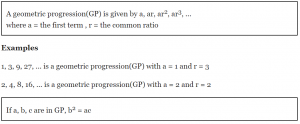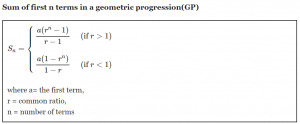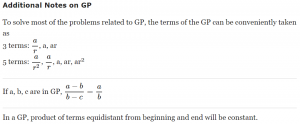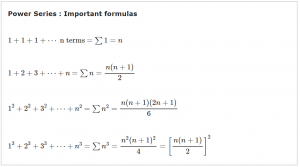Sequence and Series
Arithmetic Progression (AP)
- An arithmetic progression is a sequence of numbers in which each term after the first is obtained by adding a constant ‘d’ to the preceding term. The constant d is called the common difference.
- An arithmetic progression is given by a, (a + d), (a + 2d), (a + 3d), …
where a = the first term, d = the common difference
- If a, b, c are in AP then b = (a + c)/2
- nth term of an arithmetic progression
tn = a + (n – 1)d
where tn = nth term, a= the first term, d= common difference
- Number of terms of an arithmetic progression
n=(l-a)/d+1
where n = number of terms, a= the first term , l = last term, d= common difference
FORMULAS


ADDITIONAL NOTES ON AP
To solve most of the problems related to AP, the terms can be conveniently taken as
3 terms: (a – d), a, (a +d)
4 terms: (a – 3d), (a – d), (a + d), (a +3d)
5 terms: (a – 2d), (a – d), a, (a + d), (a +2d)
Harmonic Progression(HP)
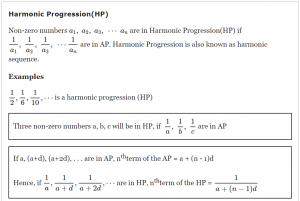
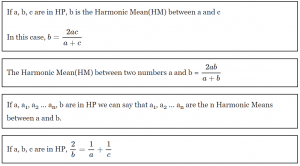
Geometric Progression (GP)
Geometric Progression (GP) is a sequence of non-zero numbers in which the ratio of any term and its preceding term is always constant.
